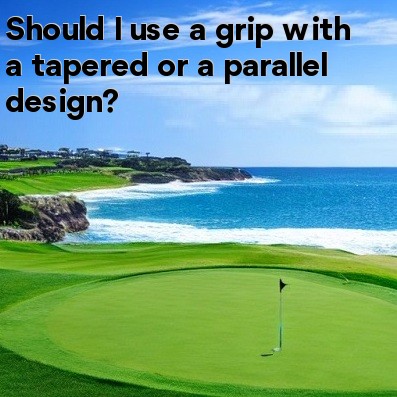
Should I Use a Grip with a Tapered or Parallel Design in Golf?
When it comes to golf grips, there are two main designs to choose from – tapered or parallel. Each design has its own benefits and considerations, and the choice ultimately depends on personal preference and playing style. In this article, we will explore the differences between tapered and parallel grips to help you make an informed decision.
- Tapered Grip
A tapered grip, as the name suggests, is thinner at the top and gradually thickens towards the bottom. This design promotes a lighter grip pressure in the fingers, allowing for increased wrist articulation during the swing. The taper helps golfers maintain a stable grip without gripping too tightly, which can lead to tension and inconsistent shots.
One of the main advantages of a tapered grip is the ability to release the clubhead more easily, leading to a greater feeling of control and increased clubhead speed. Additionally, the taper allows for a more natural wrist hinge, enhancing the ability to square the clubface at impact.
Players with smaller hands often find tapered grips more comfortable, as they provide a more secure hold without straining the fingers. The reduced girth towards the top of the grip can also lead to increased hand action, which may benefit golfers seeking more feel in their shots.
- Parallel Grip
A parallel grip maintains a consistent diameter from top to bottom, providing a uniform feel throughout the grip. This design appeals to golfers who prefer a more neutral grip without any taper or added wrist hinge.
Players with larger hands generally find parallel grips more comfortable, as they provide a consistent grip size without any variations. The even grip diameter ensures a secure hold without any excessive grip pressure, promoting a relaxed and tension-free swing.
With a parallel grip, golfers might experience a more connected feel between the hands and the club, allowing for increased control and stability. The consistent grip diameter encourages a more consistent hand positioning, which can aid in achieving a repeatable swing motion.
Ultimately, the choice between a tapered or parallel grip comes down to personal preference and individual playing characteristics. It is essential to try out both grip designs and assess how they feel and perform for you.
Factors such as hand size, swing style, and desired shot shape should all be considered when making your decision. Additionally, seeking guidance from a professional club fitter or instructor can provide valuable insights and recommendations based on your unique circumstances.
In conclusion, both tapered and parallel grips have their advantages and considerations. It is crucial to find a grip design that promotes a comfortable and secure hold, as well as enhances your specific golf swing characteristics. Experimentation and expert guidance will help you make an informed decision that optimizes your performance on the golf course.





